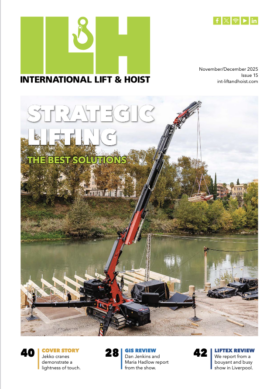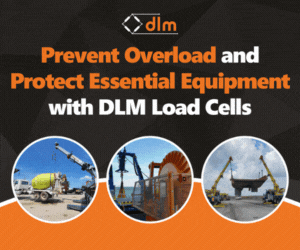)
Reporting live from the coalface
We’re failing to properly train the next generation of crane technicians, even in heavy industrial sectors, warns Joel Cox.
I was talking to a mining market manager from one of the world’s major electric overhead travelling (EOT) crane and hoist manufacturers at the recent MINExpo International, which took place 13-15 September in Las Vegas.
The event is organised by the National Mining Association (NMA), which serves to build support for public policies that will help America fully and responsibly utilise its mineral and coal resources. As such, the show attracts the industry’s movers and shakers, including stakeholders in exploration; mine development; open pit or underground mining; preparation and processing; smelting and refining; environmental compliance; safety; and reclamation or mine closures.
In other words when people their talk—you listen. And I was certainly listening intently to this individual. The subject of the conversation was the same as many I’d had over the three-day event: training. More specifically, we discussed the worrying lack of it, especially among crane technicians, in heavy industrial sectors. Such professionals work for all kinds of companies these days, but most manufacturers and dealers have them on their payrolls.
You can hardly believe it; we’re in 2021 in one of the most hazardous industries in the world, and we’re talking about a lack of properly trained people. Think about the size of the equipment in an industry that relies on rock crushers, conveyors, deep underground mining tools—and everything in between. Cranes and hoists are a fundamental requirement for all these applications and, as such, the people that install, maintain, inspect, and service them are integral to continued production and safe operation.
For my company, the mining market is full of potential and it’s true that our products and people feel right at home there. We have many monitoring features for remote pits and stations, and downhill conveyors, for example. Our equipment offers feedback from brakes and informs users on service intervals and predictive maintenance. However, our future in the sector is only as secure as the expertise we back it up with, which is why we invest so much time and money on world-class training, education, and continuing professional development (CPD). Unfortunately, this isn’t the case with all industry stakeholders.
Mind the gap
The problem with gaps in knowledge is that they steepen the learning curve. And the problem with learning curves, especially steep ones, is that there isn’t enough time these days allocated to learning. Challenges are magnified from inception through to commissioning and after-sales maintenance. Issues are being amplified further because, as time goes on, there are less technical and skilled employees in the workforce, as fellow exhibitors, sponsors, and delegates at MINExpo would all agree.
It’s no surprise that time and money combine as the reasons why training isn’t up to scratch. Many manufacturers don’t give their workers exposure to all the necessary technologies and suppliers that they might encounter. New technology launches can bamboozle people who should understand it better than anyone else. An increase in automation means there are more variable frequency drives, advanced controls, programmable logic controllers, and software that some guys and gals don’t fully understand. This is a worsening problem, and it is leading to unscheduled downtime and skewed productivity goals.
You wouldn’t expect it, but this rapidly-evolving climate is just as difficult for younger professionals as it is those approaching their final years in employment, largely because they’re not starting from the same knowledge base. Consider the educational foundations of a veteran welder, millwright, lineman, pipe-fitter, machinist, or electrician. These trades have equipped people with the grounding to go on and become the best EOT crane and hoist technicians and service people in industry. But the volume of people learning these trades is thinning out. We need to urgently readdress the balance. Let’s put trade schools and military or automotive trades back on the map.
There are things you can do as an end user to ensure that you only contract technical people with the right expertise. Pre-job briefings present a good opportunity to assess someone’s knowledge on the subject. Also insist on provision of a detailed scope of work long before arrival onsite. It’ll be clear who has been properly trained and brings competence to the project and, on the other hand, who is lacking the required expertise to deliver against the high expectations of a heavy industry like mining, steel, or offshore. In other words, don’t neglect due diligence.
Walk the walk
It’s one thing to point out the problem and quite another to fix it. By the time you read this article in the October edition, Dellner Bubenzer would have opened its new brake training lab in Spring, Texas; we already have similar labs in Germany, Malaysia, and Dubai. The facility has been designed and built to teach new employees, new technicians, existing agents, customers, and service professionals everything they need to know about specific product ranges, including brake couplings, magnetic brakes, thruster brakes, and hydraulic brakes. We anticipate that U.S.- and Latin America-based individuals will sit classes and gain practical expertise that will stand up to the demands of the most complex installations in a high-pressure environment, like a mine.











